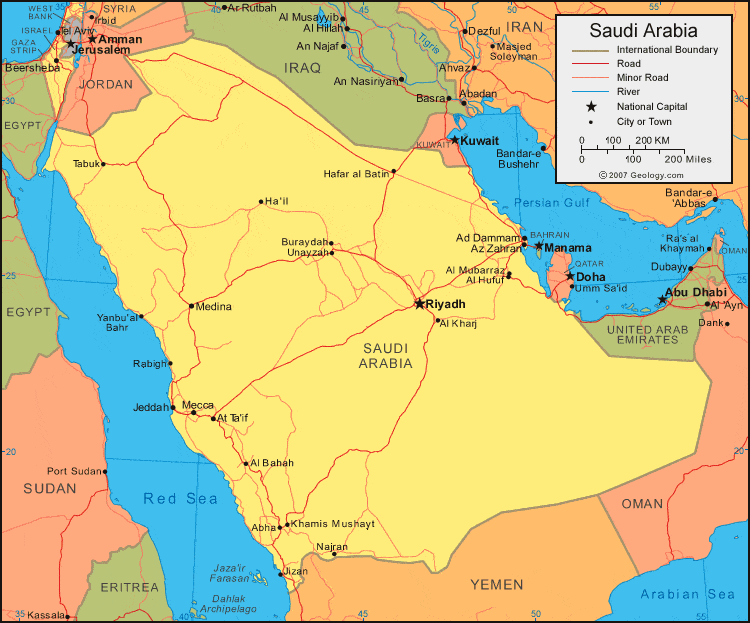Although it is the largest country in the Middle East, Saudi Arabia does not have any major bodies of water in it. This lack of a steady water supply required the country to use alternative sources such as rainfall, groundwater, desalinated seawater, and very scarce surface water to fulfil the country's needs for water. Modern technology has located and increased the availability of much of the underground water.
The climate in Saudi Arabia is mostly arid and dry. As it is a desert the, althought the temperatures are high during the day, it falls drastically at night. The heat usually becomes very intense during the afternoon, especially in the summer. Rainfall is very rare, and even if it does rain, it s a few centemeters at most. Saudi Arabia is the world's largest expoerter of oil.
The primary resource of Saudi Arabia is petroleum. But they also have reserves of petroleum, natural gas, iron ore, gold, copper
Population:
Nationality: Noun--Saudi(s). Adjective--Saudi Arabian or Saudi.


No comments:
Post a Comment